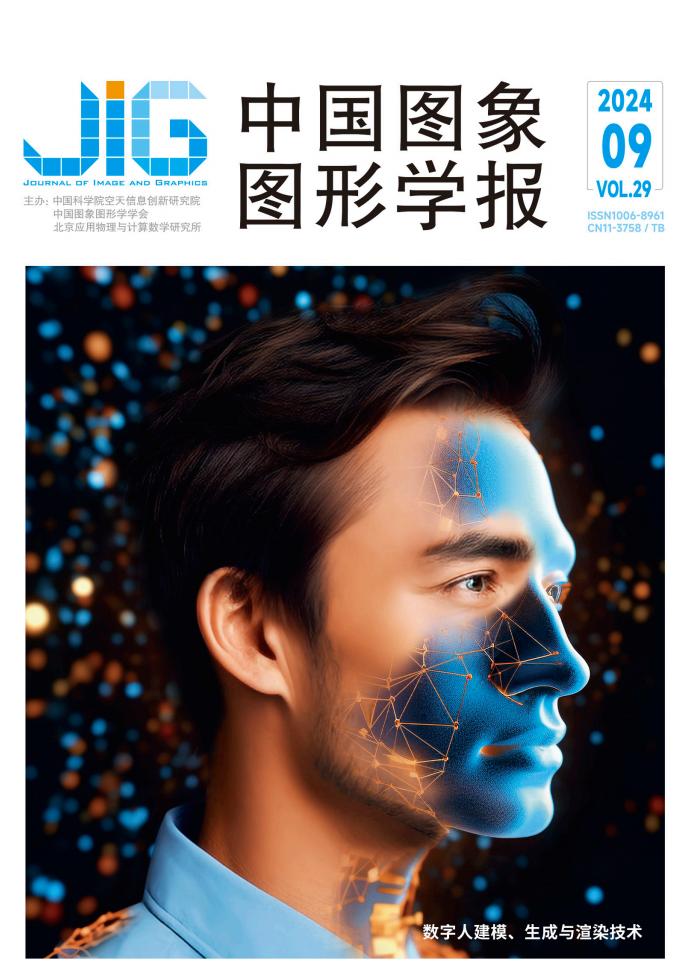使用超分辨率技术和自监督引导生成高分辨率面部表情图像
Q3 Computer Science
引用次数: 0
摘要
最近智能手机和社交网络服务的普及增加了看到人脸图像的手段。特别是在人脸图像领域,基于面部表情变换的人脸图像生成已经通过基于深度学习的方法实现。然而,在现有的基于深度学习的模型中,由于计算资源有限,只能生成低分辨率的图像。因此,生成的图像模糊或混叠。为了解决这个问题,我们在之前的工作中提出了一种两步方法,通过结合生成模型之后的超分辨率网络来提高生成的面部图像的分辨率,该模型可以被认为是一个串行模型。我们进一步提出了一个并行模型,该模型通过多任务学习训练生成对抗网络和超分辨率网络。在本文中,我们提出了一种新的模型,将自监督制导编码器集成到并行模型中,以进一步提高生成结果的准确性。以峰值信噪比为评价指标,与之前基于多任务的并行模型相比,男性测试数据的图像质量提高了0.25 dB,女性测试数据的图像质量提高了0.28 dB。本文章由计算机程序翻译,如有差异,请以英文原文为准。
Generation of High-Resolution Facial Expression Images Using a Super-Resolution Technique and Self-Supervised Guidance
The recent spread of smartphones and social networking services has increased the means of seeing images of human faces. Particularly, in the face image field, the generation of face images using facial expression transformation has already been realized using deep learning–based approaches. However, in the existing deep learning–based models, only low-resolution images can be generated due to limited computational resources. Consequently, the generated images are blurry or aliasing. To address this problem, we proposed a two-step method to enhance the resolution of the generated facial images by combining a super-resolution network following the generative model, which can be considered a serial model, in our previous work. We further proposed a parallel model that trains a generative adversarial network and a superresolution network through multitask learning. In this paper, we propose a new model that integrates self-supervised guidance encoders into the parallel model to further improve the accuracy of the generated results. Using the peak signalto- noise ratio as an evaluation index, image quality was improved by 0.25 dB for the male test data and 0.28 dB for the female test data compared with our previous multitaskbased parallel model.
求助全文
通过发布文献求助,成功后即可免费获取论文全文。
去求助
来源期刊

中国图象图形学报
Computer Science-Computer Graphics and Computer-Aided Design
CiteScore
1.20
自引率
0.00%
发文量
6776
期刊介绍:
Journal of Image and Graphics (ISSN 1006-8961, CN 11-3758/TB, CODEN ZTTXFZ) is an authoritative academic journal supervised by the Chinese Academy of Sciences and co-sponsored by the Institute of Space and Astronautical Information Innovation of the Chinese Academy of Sciences (ISIAS), the Chinese Society of Image and Graphics (CSIG), and the Beijing Institute of Applied Physics and Computational Mathematics (BIAPM). The journal integrates high-tech theories, technical methods and industrialisation of applied research results in computer image graphics, and mainly publishes innovative and high-level scientific research papers on basic and applied research in image graphics science and its closely related fields. The form of papers includes reviews, technical reports, project progress, academic news, new technology reviews, new product introduction and industrialisation research. The content covers a wide range of fields such as image analysis and recognition, image understanding and computer vision, computer graphics, virtual reality and augmented reality, system simulation, animation, etc., and theme columns are opened according to the research hotspots and cutting-edge topics.
Journal of Image and Graphics reaches a wide range of readers, including scientific and technical personnel, enterprise supervisors, and postgraduates and college students of colleges and universities engaged in the fields of national defence, military, aviation, aerospace, communications, electronics, automotive, agriculture, meteorology, environmental protection, remote sensing, mapping, oil field, construction, transportation, finance, telecommunications, education, medical care, film and television, and art.
Journal of Image and Graphics is included in many important domestic and international scientific literature database systems, including EBSCO database in the United States, JST database in Japan, Scopus database in the Netherlands, China Science and Technology Thesis Statistics and Analysis (Annual Research Report), China Science Citation Database (CSCD), China Academic Journal Network Publishing Database (CAJD), and China Academic Journal Network Publishing Database (CAJD). China Science Citation Database (CSCD), China Academic Journals Network Publishing Database (CAJD), China Academic Journal Abstracts, Chinese Science Abstracts (Series A), China Electronic Science Abstracts, Chinese Core Journals Abstracts, Chinese Academic Journals on CD-ROM, and China Academic Journals Comprehensive Evaluation Database.
 求助内容:
求助内容: 应助结果提醒方式:
应助结果提醒方式:


